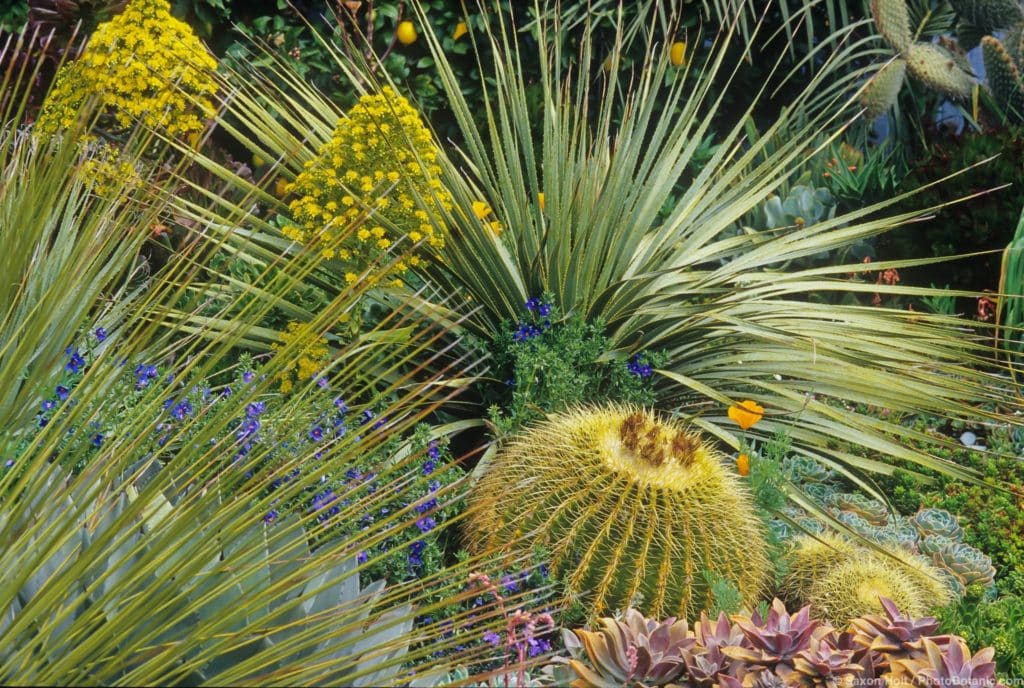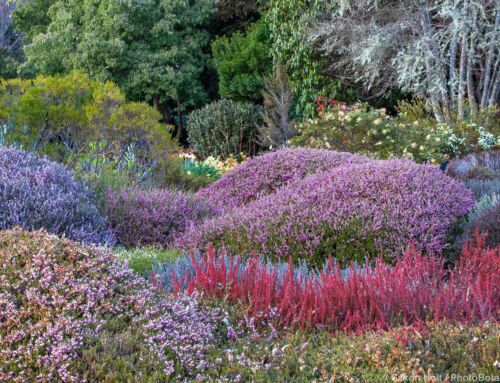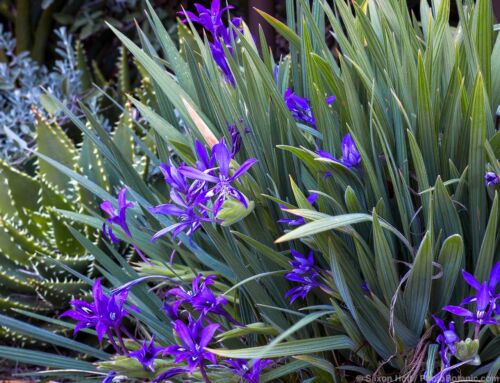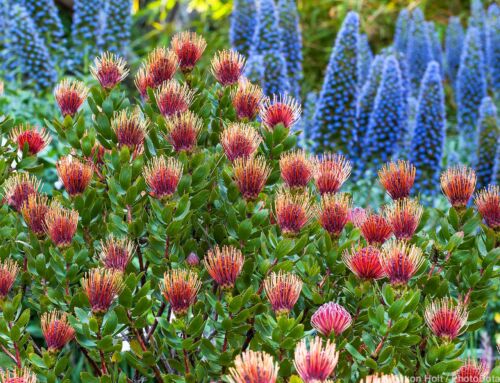
Dasylirion wheeleri in succulent border with barrel cactus in foreground
A boldly architectural plant for big drama in pots or in the ground, Dasylirion wheeleri (desert spoon or sotol) forms a dense, symmetrical rosette of long, narrow, silvery blue-green, somewhat twisted leaves with aggressively hooked teeth along the margins and attractively frayed straw-colored tips. Over time plants develop a short, stout trunk, which may not be noticed unless older brown leaves are removed.
Native to northern Mexico and the southwestern United States, Dasylirion wheeleri is rather widely available in the trade. Several other dasylirions are available with a little hunting about, including D. texanum (Texas sotol), with paler green leaves that are not twisted, D. leiophyllum (smooth sotol), with glossy green leaves and, despite its common name, equally wicked spines, and D. longissimum (Mexican grass tree), with gray-green leaves that lack the fearsome spines and, after many years, a substantial tree-like trunk.
Dasylirion wheeleri grows moderately fast, but can be held to a large container for quite some time. Mine were installed as decent sized five-gallon plants in thirty-six-gallon pots six or seven years ago. They are now six feet wide and four feet tall, spilling out in all directions.

Dasylirion wheeleri spines
Because of the sharp spines, which catch and hold onto skin or clothing when they are so much as gently brushed or touched, all dasylirions except the smooth-margined Dasylirion longissimum are almost impossible to comfortably work around. They should be placed away from paths likely to be traveled by the unwary and spread far apart if more than one is planted in the ground. Pulling weeds, removing fallen tree leaves, or attempting to cut off dead leaves at the base are hellacious tasks, with outcomes ranging from snagged clothing to bloodied body parts. It’s best to locate these plants where no maintenance will be required.
Dasylirions flower on spikes that arise from the center of the rosette, reaching ten feet or more above the foliage by early summer. Flower stalks appear only once every few years, but, unlike the agaves, the plants do not die after flowering. For some reason, my plants have yet to flower. Perhaps they are not sufficiently mature. Maybe it’s the afternoon shade (they are said to resent shade). Or possibly it’s the constraints of growing in containers. I can wait. Flowers are just a bonus on plants as spectacular as this.





Leave A Comment